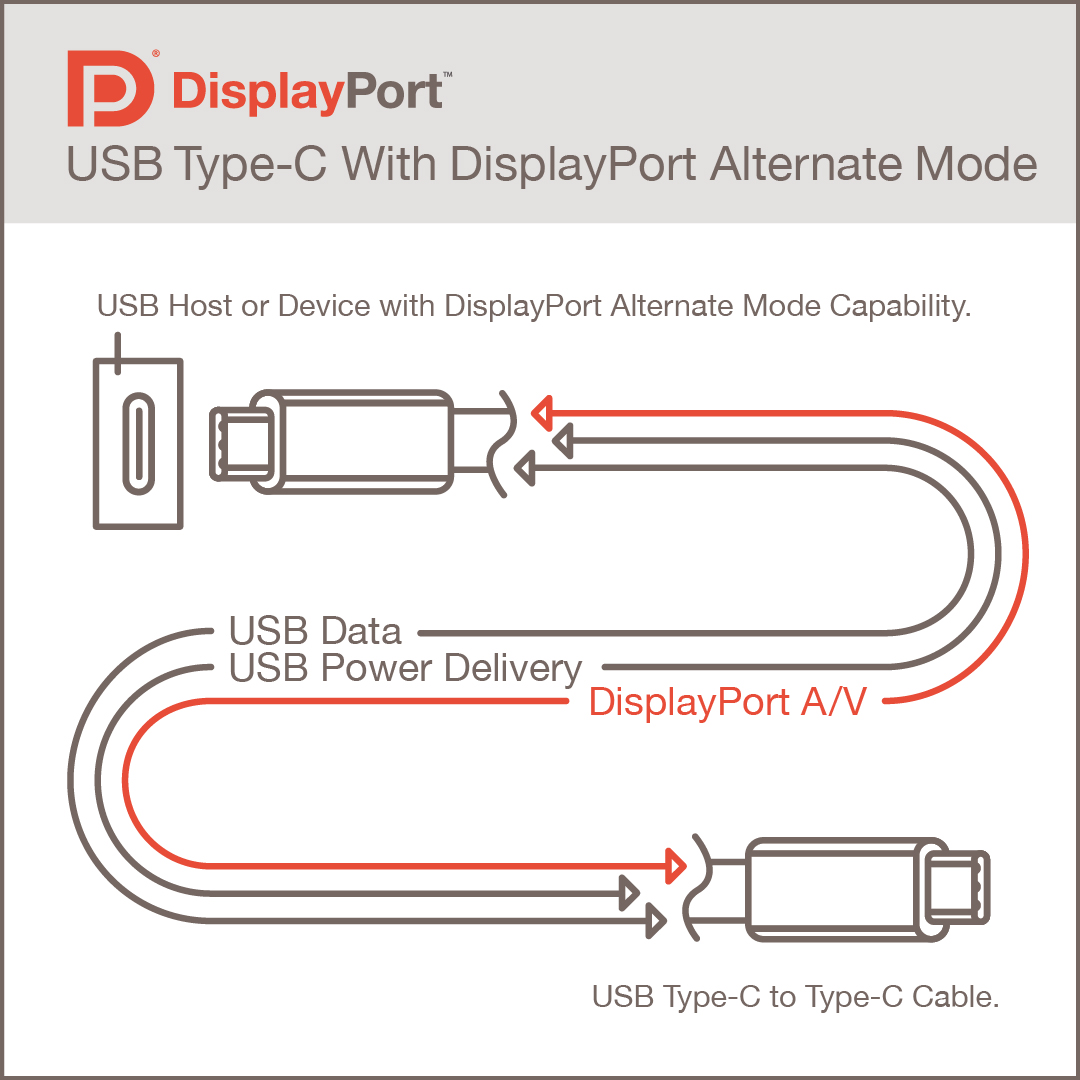In the midst of this pandemic, some things are still moving along. The Video Electronic Standards Association (aka VESA) is the international organization that defines the connectivity standards for most consumer electronics and last month they announced they had released updated specifications for the transition to USB4.
Announcing that the USB4 standard will fully support the coming DisplayPort Alternate Mode v2.0, with higher resolution display capabilities, faster data transport and noticeably higher refresh rates via USB TypeC connections. This is USB4’s first expansion beyond the existing infrastructure built on and around Intel’s Thunderbolt 3 physical layering (PHY) that relies on the same interoperability and standards.

This change will facilitate the seamless interoperability with the new USB4 specification published by the USB Implementers Forum (USB-IF). It will also enable features in the latest release version of the DisplayPort standard (version 2.0) via the USB Type-C® (USB-C) connector.
“The USB Type-C is becoming the connector of choice in notebooks and mobile solutions,” said Syed Athar Hussain, VESA board vice-chairman and display domain senior fellow, AMD. “With the new DisplayPort Alt Mode 2.0 specification, USB Type-C now delivers compelling single-connector solutions for docking, gaming, AR/VR HMDs, and professional HDR displays that combine 80 Gbps of video bandwidth and other important features of DisplayPort 2.0 with the transport of USB data and power delivery”
USB4 is built on the foundations of the current Thunderbolt 3 Titan Ridge chipset, with 40gbps of data throughput, multi-device connectivity while supporting dual 4K displays and power over a single cable. Thunderbolt keeps them aligned in their individual pathways or PHY layers, with the display protocol defined along its own dedicated pathway. The addition of the DP 2.0 Alt Mode allows your computer to send DisplayPort data across both the data and display pathways effectively doubling the bandwidth for display connectivity.
Since its announcement in June 2019, the enthusiasm for the new DisplayPort 2.0 standard has been overwhelming, offering 3x the data bandwidth as compared to the previous version. Additionally, it addressed the growing requirements for 8K deliverables and the greater need for display processing for Augmented and Virtual Reality. The color processing and metadata capabilities will be foundational for the coming revolution in Virtual Television and Film Production.
DisplayPort 2.0 delivers a maximum payload of 77.37 Gbps across the four PHY layer lanes (at up to 19.34 Gbps per lane) which is supporting ultra-high display performance configurations such as an 8K (7680×4320) display with a 60 Hz refresh rate with full-color 10 bit 4:4:4 HDR resolution uncompressed, and up to 16K (15360×8460) at 60 Hz with 10 bit 4:4:4 HDR resolution with compression. With the release of DisplayPort Alt Mode 2.0, all of these high-performance video capabilities are now available to the USB ecosystem.
VESA is now taking responsibility related to high-performance displays over USB-C, whether through a native DisplayPort or USB-C connector or through tunneling of DisplayPort 2.0 over the native USB4 interface. The 10bit DisplayPort standard is the default protocol used in the Thunderbolt interface, making it the de facto video standard across computers and mobile displays.
I am expecting to start seeing USB4 and DisplayPort 2.0 products being announced starting late 2020, with widespread adoption by 2022 by the drive manufacturers. I also expect we’ll see the displays following 12-18 months behind the storage rollouts.

